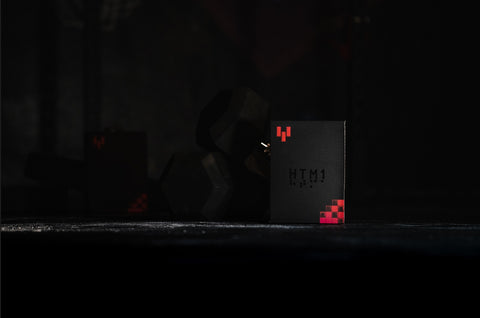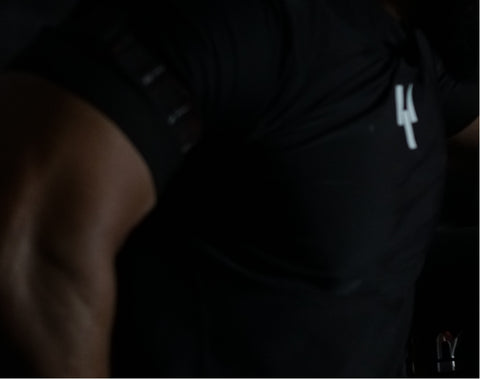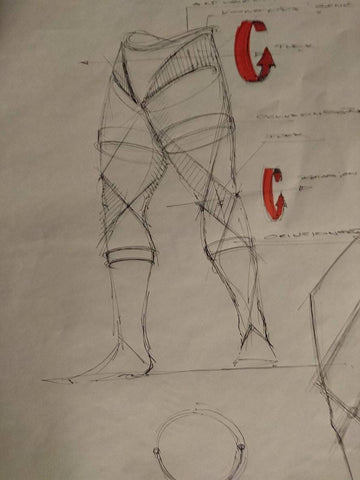Perhaps you have noticed the new noise about venous blood flow restriction training or occlusion training over the last few years, (you can simply find such workout plans here) in case you're in the dark about what it is, or why the release of the Hypertrophy Manual 1 (HTM1) was not only necessary but perfect in its timing, read on further.
First time i heard of occlusion training was 5 years ago, it was constantly been called by different names at the time. Some knew it as blood flow restriction (BFR) training, others occlusion training or even kaatsu! And due to these high amounts of sources that presented these new findings came also a high amount of misunderstandings and strange misconceptions of the subject of venous occlusion training. What is does for our physiology, the means of attaining the results we are expecting to attain and the tools of reaching those results never matched the knowledge that was embodied in the person. And the confusion is not getting less, but more.
There was more than enough research backing this science since the 1970s! But i found myself in a key position, having labs at my disposition and being an ex-pro athlete myself, i spent the following years researching and studying it firsthand. And my conclusion is the same of that of hundreds, if not the thousand of researchers that exist out there! I know venous occlusion training has a huge benefit to people who want to push beyond their limit at the end of their heavy weight workout, or to people who cannot lift heavy at all like rehab patients, senior citizens well beyond their age of fight, or for whatever other reason it may be that an individual cant succumb to heavy weight training..
If by the end of this article, you still have some unanswered questions, feel free to hit me up at @mehdiettehadulhagh on Instagram, and I’ll respond and we’ll post the Q&A here to go along with the article!
What is venous occlusion training and why does it work?
In the most simplest of terms, venous occlusion training is the reduction of the lumen of the peripheral veins in the proximal part of the working muscle, to increase metabolic waste concentration, and thus, increase the bodies anabolic hormone reaction with a lot less weight that conventional training (20-30% 1MR). During properly performed venous occlusion training, arterial nutrient rich blood is able to enter the muscle via arterial flow; though, due to the hypertrophy bands, the veins are narrowed so that the blood pools, like a dam within the working muscle, and is prevented from leaving the working muscle in its entirety, thus directly causing muscle hypertrophy or "the pump".
Before the HTM1, most people would achieve this by wrapping a device such as a wraps around the top portion of a limb to restrict the venous blood flow out of the working muscle. Now, with the HTM1, its safer , more consistent and easier to use.

When in my workout do I use the HTM1's occlusion bands?
That entirely depends on your goal and how much time you have.
Generally, for the most results, occlusion training is performed at the end of the workout on an already warmed up or even on a "pumped" hypertrophied muscle! Following the prescribed 20-50% resistance weight of your one-rep max (1RM) for four sets of 20-30 reps with a 2 second cadence, and ending with an unwrapped last set of 20 reps is the ultimate way to maximize your muscle gains using occlusion training.
Does this mean using it as a tool for warming up, or a tool for when you are running late and you absolutely have no time for more than a 20 min workout is wrong or wont bear fruits ? no. Its absolutely doable and it will still perform its function as a hypertrophy accelerating tool! Just in different degrees.
What Should I Wrap with, where should i Wrap and how tight should i Wrap?
Before the HTM1, people used knee wraps, and turniquets to acheive muscle hypertrophy, with some success. Issue is, the location of the band, the tightness and the consistency in use matters for results.
Research has shown that a narrower cuff width (5-9 cm) reduces the risk of occluding the arteries, compared to a wider cuff or wrap seen in most occlusion bands on today's market, or even knee wraps used. (13+ cm). For this reason, the HTM1 is the best tool we have for the layman in reaching consistent results. As the width of the band is between 5-9 cm, the hypertrophy band has markers for consistent occluding pressure, and most importantly, the location (if the shirt is your size) of the bands are exactly where it needs to be. Too low, and it does not take advantage of the real-estate of the working muscle, too high, and there is a high risk of occluding an artery. ( Axillary artery in upper limbs, and femoral in lower limbs) This innovation is especially needed for the upper limbs, as research has shown the smaller limbs have a greater probability of arterial flow occlusion. So location, width of bands, pressure and consistency are paramount to safety and growth.

Can I lift heavy and train occlusion training with the HTM1?
The main advantage of occlusion training is that one can increase in muscle mass at very low resistance or weights. Some researchers have shown, muscle gain in the thigh circumference have been seen in exercises with an intensity even as low as walking! But for maximum effect and gain, any resistance type training with an intensity of 20-50% of the 1MR showed the greatest results. Especially when done at the end of a normal high intensity weight lifting session.
The HTM1 has four settings of pressure, How tight should it be?
It has been studied that, if the occlusion pressure is 40mmHg vs 80mmHg (which is the difference between a comfortable compression band and a band that on a scale from 1-10 is a 10.) The benefits and gains where equal across both levels of occlusion.
In other words, when it comes to the tightness or pressure, "less is more" as its safer to keep the arteries free from the possibility of occlusion.
What is infact more important is the reps and weight needed, as the concentration of the metabolic waste in the muscle created by having a high rep count with 20-50% of ones 1MR is what makes a low occlusion pressure sufficient.

How can i get my chest, abs or other muscles that are not in contact with the HTM1 hypertrophy bands to also benefit from occlusion training when I can't directly occlude them ?
Good news is, you do not have to occlude the a muscle for it to get the benefit of your occlusion training being performed on another body part. In other words, if you train chest then triceps, and chose that on your last four sets of triceps, you tighten the HTM1 bands and perform the necessary sets and reps prescribed for occlusion training, your chest will also get the benefit of the anabolic growth and central nervous system activation of converting slow twitch to fast twitch muscle.
How ? Remember, the anabolic reaction and growth response to occlusion training is systemic (affects the entire body, just like growth hormone does not only affect one muscle, but the entire skeletal musculature). Meaning, it affects the entire body, as long as your muscle receptors are ready (most sensitive and receptive post workout, thus its best used as a finisher to your workout).
An example is found in the research published in Clinical Physiology and Functional Imaging, it discovered occluding venous blood flow to the arms and performing a simple bench press actually resulted in as much as a 16 percent increase in muscle activation of the pectoral muscles. Another case also found that individuals who first trained a muscle group with occlusion training, like their legs, and then followed it with an arm workout actually get more growth in the arms than when training them separately. Think in terms of a systemic anabolic reaction, and not in terms of localized muscle fiber damage based growth.
Thus, training chest, back, or glutes with the arms or legs restricted may be beneficial for inducing growth in those muscles.
I don't want huge muscles, i only train 2-3 times a week, and I Just to tone and perhaps lose some weight, is the HTM1 for me?
Fortunately for everyone, a great deal of research about occlusion training has been done in nonbodybuilders. We have actually found that 2-3 workouts of occlusion with the HTM1 a week is perfect, so the answer is absolutely!
What type of prescribed workout is most effective for occlusion training and will you release A whole HTM1 Workout?
To use the HTM1 as a finisher, do an isolation movement such as curls or leg extensions for 4 sets of 30, 20, 20, 20 reps, with no more than 30 seconds of rest between sets, using 20-50 percent of your one-rep max. Perform this 1-3 times per week.
and yes we will. If chosen, a free " VOTwear: Training Manual" will accompany every HTM1 purchased.
What About Blood Clots?
Ill keep this one short, as i want to be clear. The three major factors that influence blod clots or "thrombosis" are; hypercoagulability, vascular wall damage, and vascular stasis of blood flow. Unless you suffer from any vascular pathologies that have all these three aspects, known as "Virchow's Triad", there is no risk of a blood clot formation if you respect the rules of the occluding pressure.
I hope i have answered most, if not all of your questions. Thus we have reached the end of this article, you still have some unanswered questions, feel free to hit me up at @mehdiettehadulhagh on Instagram, and I’ll respond and we’ll post the Q&A here to go along with the article!
-Author Of This BlogPost: Mehdi Ettehadulhagh M.D.


